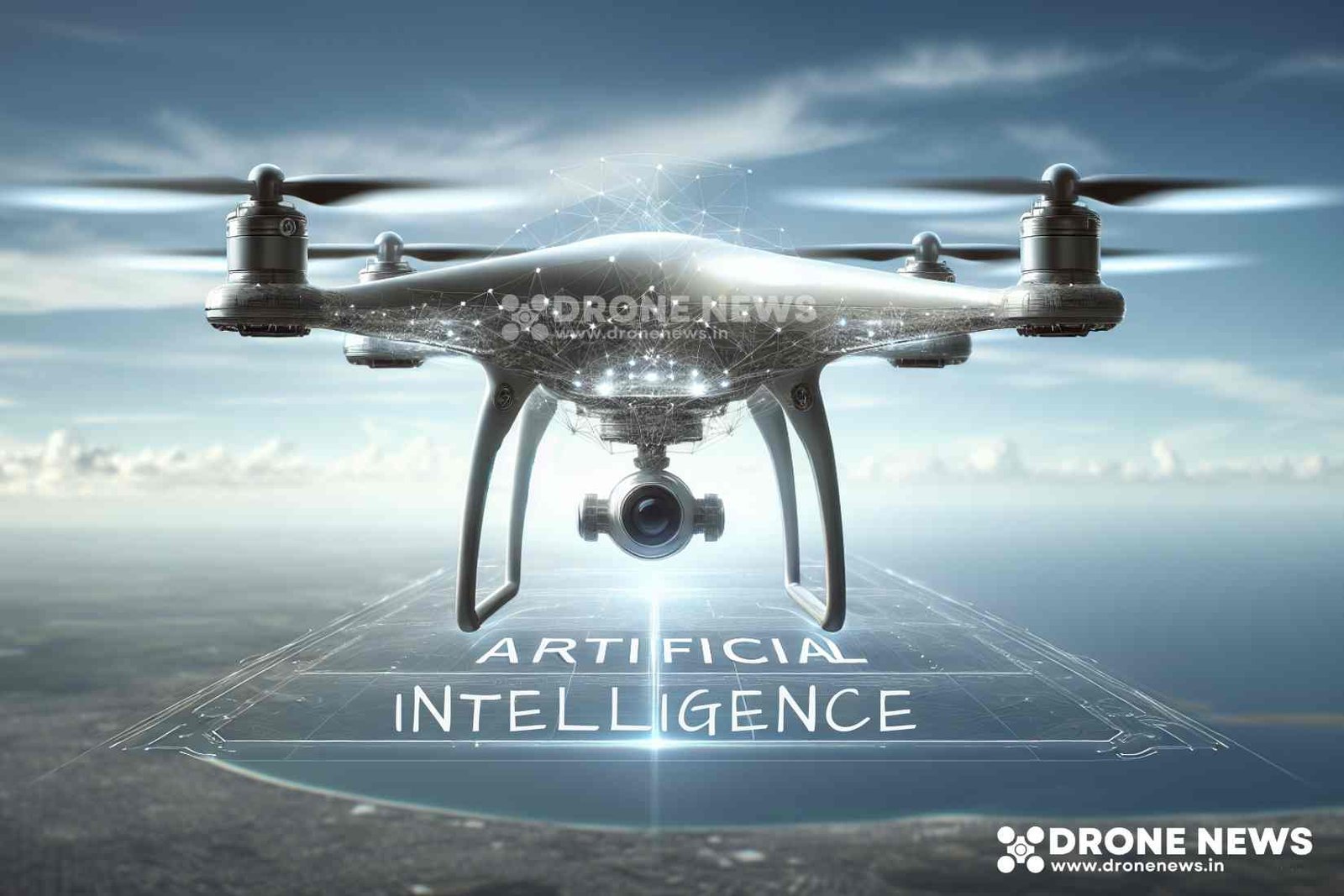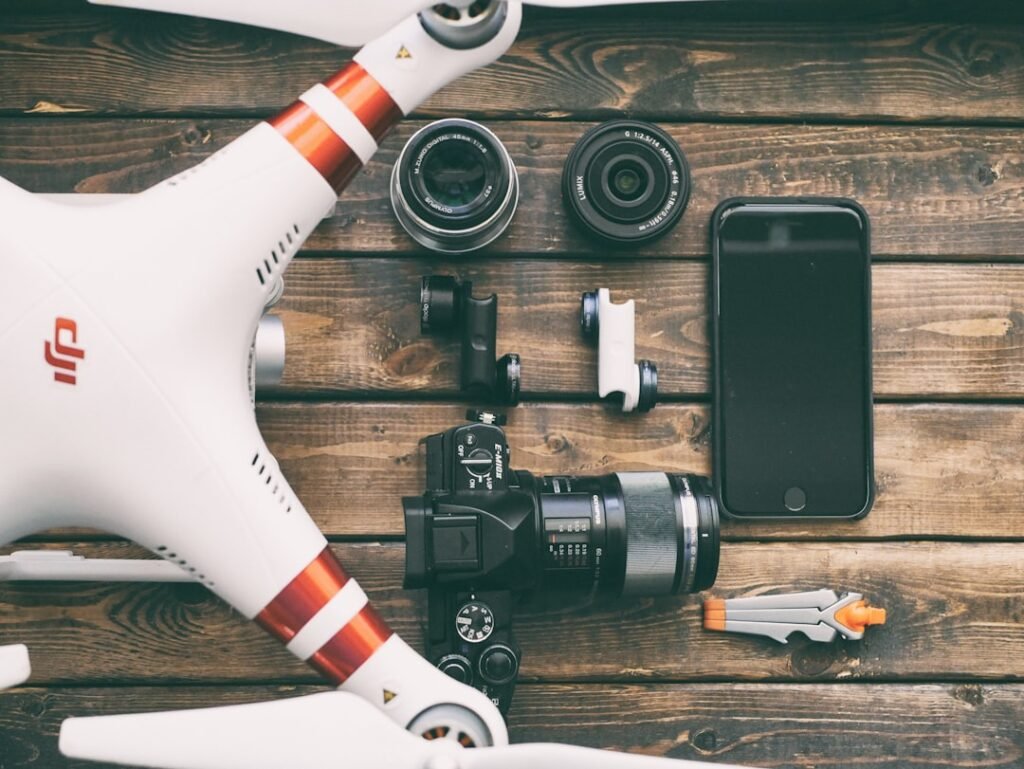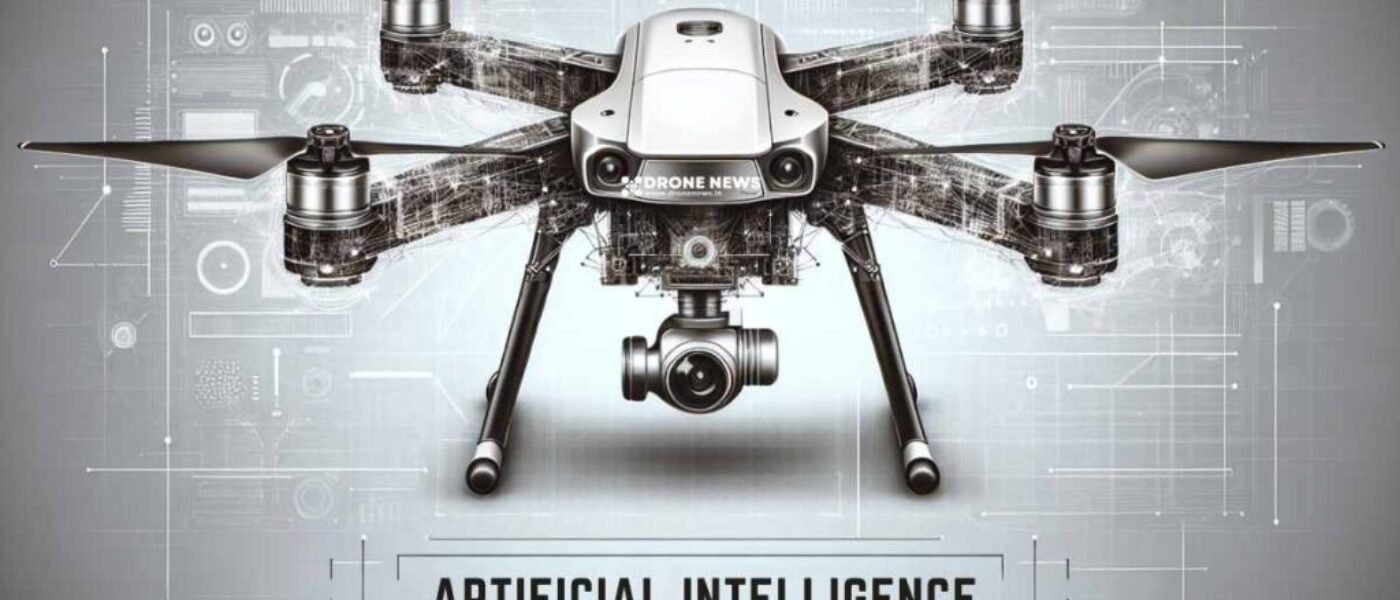Introduction
In recent years, the skies above us have been seeing a new kind of visitor—AI-powered drones. These flying marvels aren’t just about the thrill of flying; they’re transforming the way we work across various industries. From agriculture to construction, these drones combine traditional aerial abilities with smart technology to offer innovative solutions and collect crucial data. As they continue to evolve, their impact on efficiency and innovation becomes more apparent, making the buzz around them utterly justified.
The Evolution of Drone Technology

Early Developments in Drone Usage
Drones, also known as unmanned aerial vehicles (UAVs), began their journey primarily as military tools. Initially used for reconnaissance and surveillance, they offered a safe method for gathering intelligence without putting human lives at risk. Over time, as technology advanced, drones found their way into the civilian sector. Their potential for practical applications grew, from aerial photography and filming to mapping and even leisurely flying as a hobby.
Integration of AI: A Game-Changer
The real transformation in drone technology came with the integration of artificial intelligence. AI has turned drones into smart machines capable of making real-time decisions. With AI, drones can now navigate complex environments, identify and track objects, and adapt to new information. This leap in technology allows drones to operate with greater autonomy and efficiency, marking a significant milestone in their evolution. For instance, AI allows drones to avoid obstacles autonomously, leading to safer and more reliable operations across various fields.
Current Applications of AI-Powered Drones
Today, the use of AI-powered drones spans multiple industries, illustrating their versatile capabilities. In logistics, companies like Amazon and UPS are experimenting with drone deliveries, aiming to revolutionise the package delivery system. In infrastructure, drones inspect bridges and roads, collecting data to ensure structural safety. Environmental agencies use them to monitor wildlife and track environmental changes, providing critical data for conservation efforts. From remote monitoring and surveying to the arts and entertainment, drones are being used creatively to solve problems and enhance industries worldwide.
AI in Different Sectors
AI-Driven Drones in Agriculture
One of the notable sectors where AI-driven drones have made a substantial impact is agriculture. Farmers use these advanced drones to monitor crop health, analyse soil quality, and assess irrigation needs. Here’s how they help:
– Precision Farming: AI-powered drones provide high-resolution images and data that allow farmers to manage their fields down to the square inch, enhancing productivity and reducing waste.
– Detecting Pests and Diseases: Early detection of pests and diseases can save crops and improve yields. Drones equipped with AI can quickly identify these issues, allowing for timely intervention.
These innovations make farming not only more efficient but also more sustainable, reducing the environmental impact of traditional farming methods.
Drones in Firefighting and Rescue Operations
In emergency response scenarios, AI-powered drones have proven to be invaluable tools. Firefighting teams deploy drones to assess fire spread and identify safe paths for rescue operations without risking human lives. These drones can enter hazardous environments where it would be too dangerous for rescue teams, capturing thermal images and providing real-time data to firefighters. Similarly, during search and rescue missions, drones can cover large areas quickly, finding lost individuals and delivering essential supplies until human help arrives.
The Impact of AI on IT Jobs
As AI technology continues to evolve, it inevitably influences the job market, particularly in the IT sector. While there is a growing demand for skilled professionals to develop, maintain, and improve these AI systems, some routine tasks are becoming automated. This shift raises the demand for new skill sets among IT workers, such as expertise in machine learning, data analysis, and AI system integration. However, rather than eliminating jobs, AI is transforming them, offering opportunities for professionals to engage in more complex problem-solving and creative tasks, thereby driving innovation forward.
AI-powered drones showcase the remarkable potential of combining AI with drone technology. As they continue to integrate into various sectors, they pave the way for innovative solutions to some of the biggest challenges we face today.
Global Adoption of AI-Powered Drones
The world is abuzz with AI-powered drones’ potential, and it seems like they’re everywhere! From agriculture to security, these advanced flying machines are making waves. Let’s take a look at how different parts of the globe, especially India, are embracing this revolutionary technology.
Availability of AI Drones in India
India, with its vast landscapes and diverse needs, has taken a keen interest in AI-powered drones. The nation’s agriculture sector is particularly poised to benefit, with drones assessing crop health, optimising irrigation, and even planting seeds. Besides agriculture, the government and startups are exploring use in sectors like logistics, surveillance, and disaster management. As the cost of these drones becomes more affordable, their availability and usage are expected to rise, bringing tech-driven solutions to several persistent challenges.
Adoption Trends Across Industries
– Agriculture: Maximising yield through data-driven insights on soil conditions and crop health.
– Construction and Real Estate: Streamlining site assessments and progress tracking via aerial surveys.
– Film and Media: Revolutionising cinematography with drone-filmed aerial shots.
– Security and Surveillance: Providing a bird’s-eye view for enhanced safety and quick response measures.
The adaptability of AI-driven drones means no industry is off-limits. Their capability to collect and analyse data in real-time allows businesses to make informed decisions swiftly and accurately.
Future Prospects and Innovations
The future is bright for AI-powered drones. Imagine drones equipped with AI that can autonomously avoid obstacles, self-repair in mid-flight, or even bring parcels to your doorstep. Innovations are ongoing, with research focussing on improving battery life, navigation in GPS-denied environments, and seamless integration with other emerging technologies like the Internet of Things (IoT). As AI technology continues to evolve, the sky’s no longer the limit for what drones can achieve.
Preparing for the AI Revolution

As AI-powered drones gain altitude in various fields, we are on the brink of an AI revolution. This shift calls for readiness, not just in technology, but also in workforce and personal adaptation.
Anticipated Changes in Job Markets
The rise of AI-driven technology will inevitably lead to changes in the job landscape. While some fear job losses, others see new opportunities emerging. Automation may replace certain manual tasks, but it also creates new roles in drone operation, data analysis, and AI development. The trick is staying ahead by adapting skills and being open to entirely new career paths.
Essential Skills for the Future
To thrive in a world with AI-powered drones, you’ll need to develop a mix of technical and soft skills:
– Technical Skills: Understanding AI and data analytics, learning about drone operation and maintenance, and staying informed about emerging tech trends.
– Soft Skills: Critical thinking, problem-solving, adaptability, and effective communication across technology and human interfaces.
Embracing AI for Personal and Professional Growth
Instead of fearing AI, embracing it can lead to personal and professional growth. Engaging with AI-powered drones can offer exciting ways to innovate and improve efficiency, whether you’re a student, a working professional, or an entrepreneur. Learning to coexist with AI isn’t just beneficial; it’s essential for future endeavours. The goal is not just to keep up but to get ahead by understanding how these technological marvels can enhance our lives and workspaces.
Conclusion
In conclusion, AI-powered drones are revolutionising a multitude of industries by soaring to new heights. From enhancing agricultural practices to improving public safety and providing pinpoint data collection, the impact of these unmanned aerial vehicles is impressive and far-reaching.
– Greater efficiency and accuracy
– Sustained innovation and adaptability
– Expanding practical applications
As AI continues to evolve, so will the capabilities of drone technology, paving the way for even more innovative solutions in the future. This technological boom promises a fascinating, drone-enhanced world.

January 2, 2025 @ 10:21 am
I am testing hhid